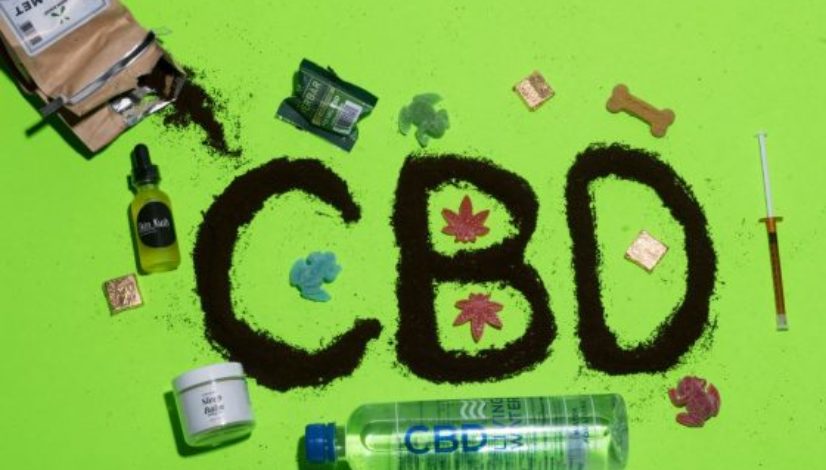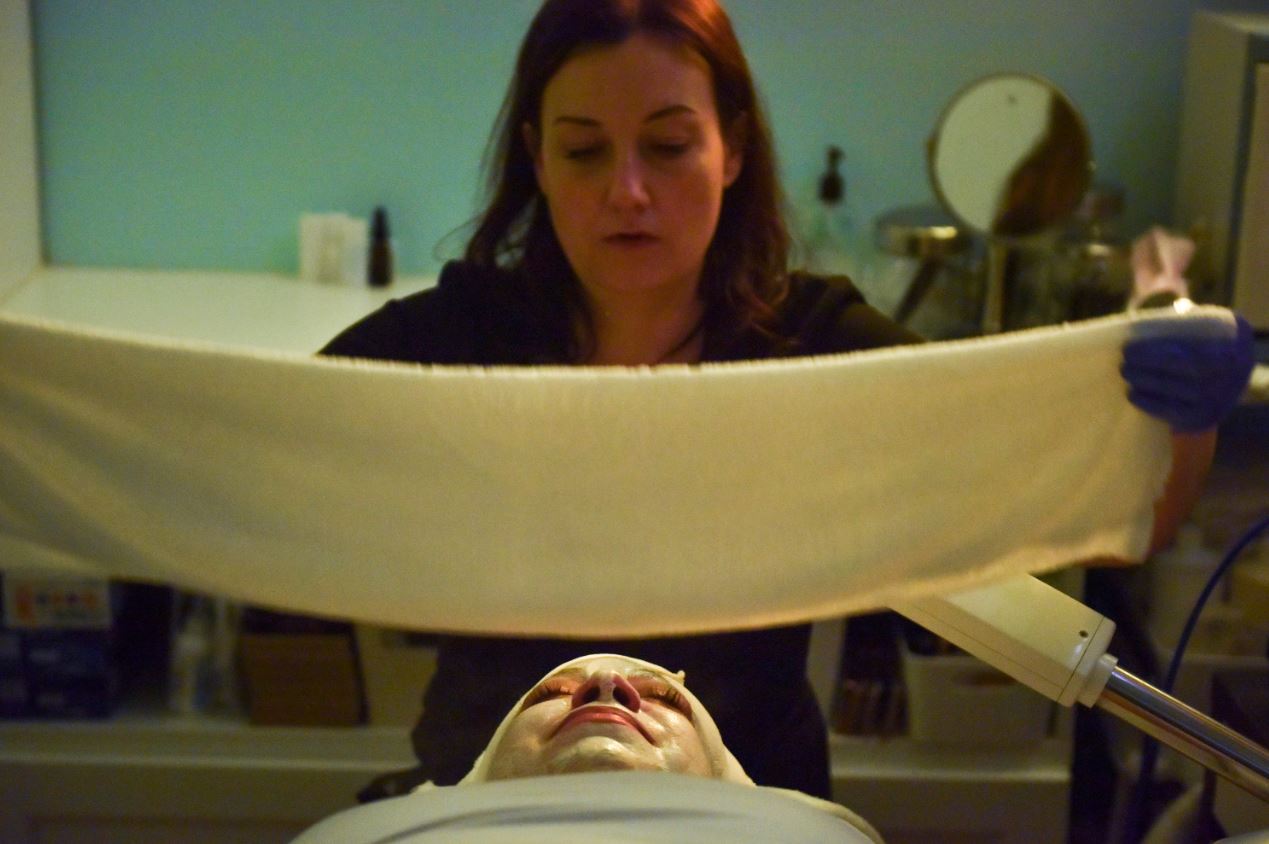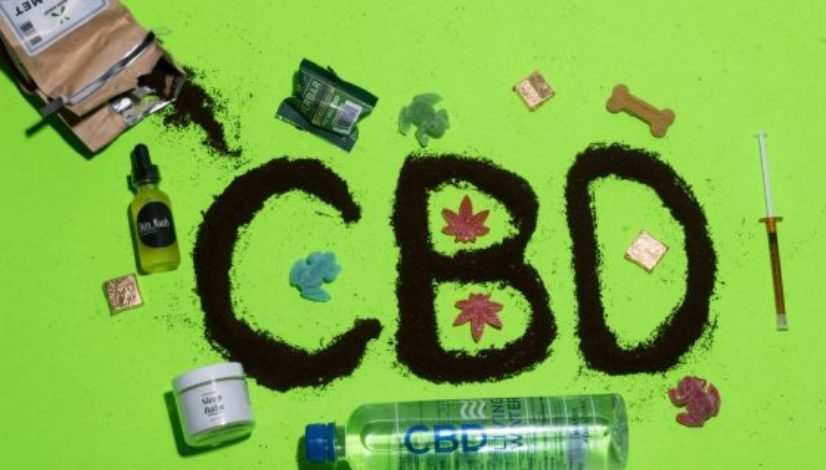Is CBD the “wonder-elixir” for Generation Anxious?

In a lowlit room at Joy’s Spa in Washington, Dawn Franklin is smoothing a creamy white mask onto Jessica Osorio’s face. The mask, she says, is infused with chamomile and sage and aloe vera, plus one ingredient that she still has to explain to her clients: CBD.
An aesthetician, Franklin started working with an Oregon chemist last year to make CBD products for the skin, believing that a little of it swiped onto the face could help repair the ravages of age.
But Franklin also takes CBD in gummy form, popping some in the morning and some at night. Like a magic pill, she says, it wipes away the sleeplessness and the stress and the nagging pain in her back that has left her with a slight limp, though she’s only in her 30s.
“It’s crazy,” she acknowledges. But she insists that CBD can do it all. “It’s just crazy, the different things that it has helped.”
For Generation Anxious, affixed to its phones and stricken by news alerts, overworked and under-rested, the mysterious substance known as CBD is quickly becoming the new “it” drug.
Devotees whisper about CBD as a soothing remedy for racing thoughts and aching extremities. CBD for those restless nights. Also, somehow, CBD for those listless mornings.
Suddenly, you can find sugar-coated CBD gummies to gnaw on, and balms to rub onto pulse points. There’s CBD for your dog (gluten-free and pumpkin-flavored!) and CBD for your aching feet. You can buy bottled CBD water in trendy, seasonally-driven fast-casual restaurants, and bags of CBD-laced coffee in shops on busy thoroughfares in Washington, Colorado Springs, Las Vegas and dozens of other cities.
Back at Joy’s, Osorio, the mask still plastered on her face, pipes up about her own experience with CBD, how it seemed to quiet the back spasms she has suffered since an accident years ago.
Plus, is it just her imagination, or do her wrinkles seem to have faded?
Related: CBD debuts at world’s largest natural products trade show, heralded as “next big thing”
Have we mentioned CBD’s relationship to the green gold mine that is the American marijuana industry? (Surprise.)
Also known by its full name, cannabidiol (pronounced canna-bid-EYE-ol), CBD is just one of hundreds of compounds hiding within the cannabis plant. It’s a distant cousin of THC, the stuff in pot that’s notorious for getting you stoned and for inciting the wrath of Attorney General Jeff Sessions.
But while the term “cannabidiol” smacks of weed, “CBD” somehow sounds . . . tame. Like something you can name-drop around Mom, like turmeric and melatonin and charcoal and biotin or any of the other wonder-elixirs that have replaced Prozac in America’s medicine cabinets.
The dizzying rise of CBD is a story of timing as much as of branding. As more states deregulate marijuana, the Reefer Madness stigma that surrounded it for decades seems to have gone up in smoke.
But here’s why CBD appeals to some who would never smoke a joint after dinner: Take a few milligrams of CBD as, say, an oil slipped onto the tongue or a piece of candy, and it tastes unmistakably like cannabis, which is to say, slightly minty and herbacious, and just a little funky. But cannabidiol’s effect is startlingly anti-climactic. It’s weed without the high.
And this may be why CBD is legal in many states, including several that don’t allow legal recreational or medical marijuana.
 Dawn Franklin, an aesthetician, performs a facial on Maria Harris using CBD-infused cleansers, masks and oils at Joy’s Spa in Washington. (Jahi Chikwendiu, The Washington Post)
Dawn Franklin, an aesthetician, performs a facial on Maria Harris using CBD-infused cleansers, masks and oils at Joy’s Spa in Washington. (Jahi Chikwendiu, The Washington Post)
An organic chemist named Roger Adams isolated cannabidiol amid a wave of research into the medicinal promise of marijuana in the 1930s and ’40s. He filed for a patent, and in the decades that followed, marijuana growers experimented with raising plants with high levels of CBD and almost no THC, hoping that a puff might trigger its own trippy bang.
It didn’t take long for them to realize that they were wrong. So, so wrong.
“CBD became known as the hippie’s disappointment,” says Stuart W. Titus, the chief executive of Medical Marijuana Inc., a producer of several CBD oils and products that entered the market in 2012.
Now, the hippie’s disappointment is back, rebranded as the stressed-out modern office drudge’s salvation.
Gwyneth Paltrow’s obsessively followed lifestyle site Goop, never one to miss a chance to gush about a wellness trend, recently published a guide to CBD cocktails. One of the many cushy lounges offering swag at Coachella next month is promising CBD oils, along with yoga and vegan food, for all its guests. A writer for the website the Cut wrote that a little CBD made her feel “delightful.”
“Some people do want the high, of course,” Titus says. “But others are looking for the health and wellness benefits.”
Which, according to the charter members of the Cult of Cannabidiol, are many. Infinite, in fact.
“I like to call it the super-nutrient, the super plant,” says Spike Mendelsohn, the Washington-based former “Top Chef” contestant behind fast-casual restaurants including Good Stuff Eatery. More recently, he’s a partner in the CBD-infused “wellness drink” Plnt Water, which comes in such flavors as turmeric and ginger, and matcha and mint and, for now, is available in a healthy-leaning fast-casual restaurant chain.
“It’s really mother’s milk,” he says. “It’s natural.”
Naturally, not everyone is buying the hype.
Last year, the FDA dinged a number of companies hawking CBD based on unsubstantiated claims – mainly that it could cure or reverse cancer.
The agency hasn’t evaluated all the claims around CBD, but some in the research field already have their doubts.
“I think you’re dealing with disease states where people are grasping for answers,” says Timothy E. Welty, a professor of pharmacy at Drake University in Des Moines. “So they’re turning to this and saying, ‘This is the answer.’ ”
Welty has been involved with CBD use in patients with epilepsy, and at least two reputable studies have shown it can relieve seizures. But as for the rest of it – the anxiety and sleep claims, all anecdotal – he’s doubtful. “They’re not scientifically founded, in my mind,” he says.
So: Is CBD just this year’s activated charcoal or functional mushroom? Harmless enough to pop without worry?
“I would be very cautious,” Welty says. With no oversight of the candies and waters and food products containing CBD, he says, “you’re not sure what you’re really getting.”
For true believers, though, it’s worth venturing into the unknown if it means tossing out the aspirin and the painkillers and the anti-depressants.
“For a long time now, there have been people approaching a lot of chefs about working with cannabis and edibles,” Mendelsohn says. Weed seems like fun. “But is it worth risking all the other work that I have? I’m in business with my family. I do a lot of work with kids. I do a lot of work with policy.”
Drugs? Unwise. The wellness space? Whole different ballgame, he says. Plus, there’s no question there’s a market for CBD. “People,” he says, “are already buying it.”
Franklin is convinced of its powers. “I’ve had friends take CBD for the first time, and call me and say, ‘Where have you been all my life?’ ” she says.
Learn more about cannabidiol in The Cannabist’s Special Report:
CBD, TBD
Part I – Forbidden medicine: Caught between a doctor’s CBD advice and federal laws
Part II – How advocates are inspiring congressional action on CBD legalization
Part III – With DEA digging in its heels on “marijuana extracts,” legality of CBD oil on trial in federal courts
Part IV – CBD research is going to the dogs in quest to legitimize pet products
Part V – CBD on the international stage: WHO committee delving into science, control status of cannabis compound
Part VI – Race for CBD medication breakthrough: Is pharma firm’s boon the hemp industry’s doom?
Part VII – Cannabinoids on local grocery shelves, but for how long?




